Inside the inner sanctums: Yorkshire's last remaining Victorian clubs
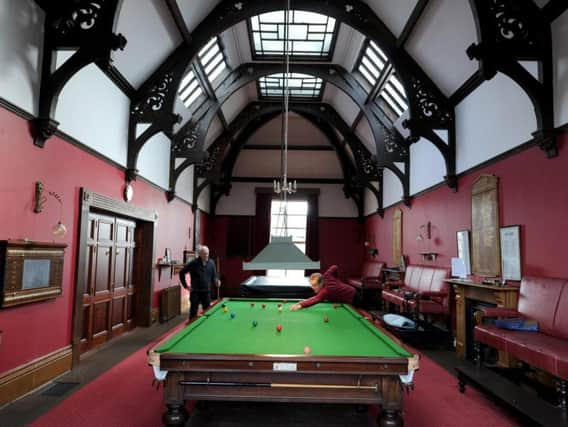

That sanctum was a private members' club - better known as a gentleman's club.
The 1800s were the golden age of the club. London's 'clubland' of St James's was home to the most prestigious, and many had aristocratic patrons.
Advertisement
Hide AdAdvertisement
Hide AdIn provincial cities, the profile of clubs was somewhat different - their membership often consisted of those from the 'trades', self-made businessmen who would not be welcome in the most selective London establishments.
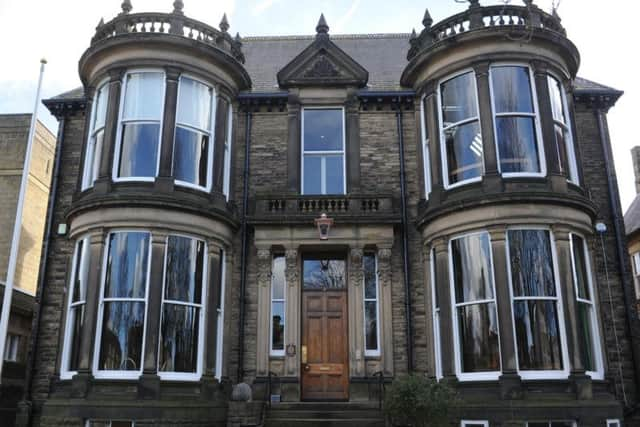

Wentworth Woodhouse handed Lottery grant to transform stables and garden buildings into wedding venue and cafeIn the towns and cities of Yorkshire, the clubs became places for professional men to drink, dine and do business at the height of the industrial age. Prospective members' applications usually had to be vetted and their character seconded by an existing member.
The likes of Leeds, Bradford, York, Harrogate, Huddersfield, Halifax and Doncaster all had clubs. Bradford's and Harrogate's still survive today, although they have had to adapt, evolve and diversify to meet modern demands and expectations.
The Harrogate Club
One could argue that Bradford industrialist Sir Titus Salt, who built the model town of Saltaire, was somewhat promiscuous when it came to his club memberships. He belonged to his local club, The Bradford, but also joined The Harrogate Club along with his brother Henry in 1857.
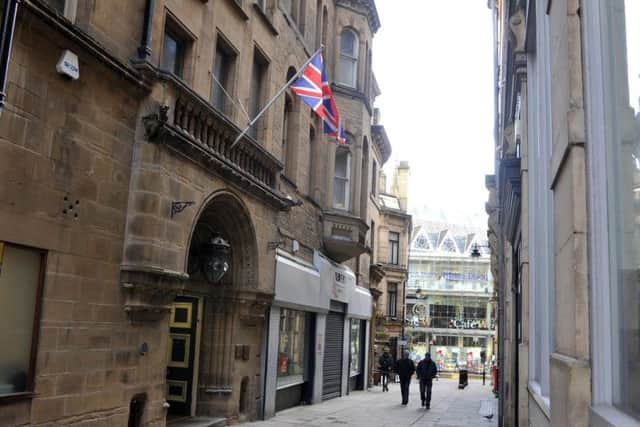

Advertisement
Hide AdAdvertisement
Hide AdThey're not the only prominent men to have been attached to this venerable institution, which was founded as reading and billiards rooms in the lounge of Gascoigne's Hotel in 1857. Cuthbert Brodrick, the architect who designed Leeds Town Hall, the Corn Exchange, Leeds City Museum and Scarborough's Grand Hotel, also visited. Sir Arthur Conan Doyle enjoyed a game of billiards here.
By 1885, the gentlemen had moved to their purpose-built clubhouse on Victoria Avenue, where they remain today.
These days, there's a dining room that can be used for events and meetings, and members enjoy 24-hour access and inclusive Wi-fi. In the evening, an honesty bar operates, and members are given their own key to the clubhouse. Women are welcome to join and there is a modern workspace in the former porters' flat in the basement.
Club president Andrew McMillan, an American, has been a member for 16 years. During his time, subscription levels have risen from 80 to around 280 and the newcomers' backgrounds are more diverse than at any point in its history.
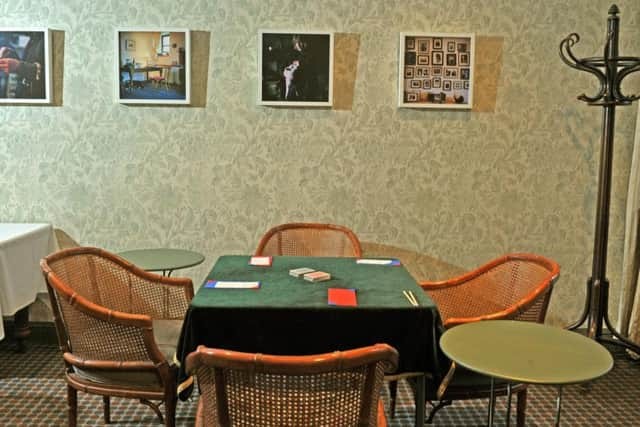

Advertisement
Hide AdAdvertisement
Hide Ad"We have a waiting list now, and the average age of our members is mid-40s. We're currently spending £65,000 on refurbishing the dining room, where we host events like guest speaker dinners and fine dining evenings with guest chefs."
Andrew shudders as he recalls previous attempts at physical change and rejuvenation, which included a 1980s wine bar and various members being allowed to loot the club of its antique furniture.
"We now have the ethos that if we cannot offer the highest quality, we should wait until we can afford to make the changes. We won't cut corners any more, and we have even been tracking down the old furniture that went missing and buying it back."
One of the most intriguing missing heirlooms is a machine gun reputedly captured from Austrian forces during World War One. After it mysteriously vanished from a coffee table, a plaque remained as evidence of where it once stood.
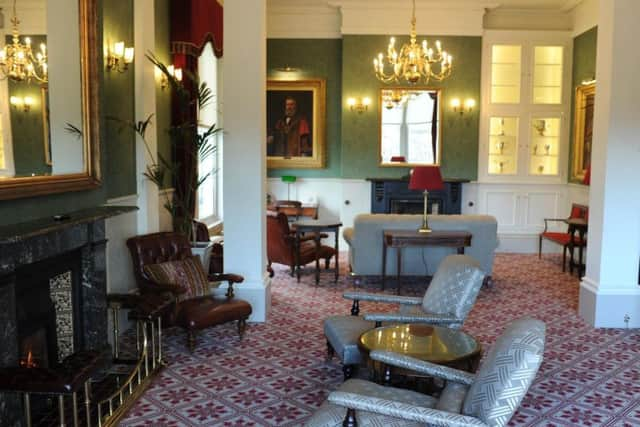

Advertisement
Hide AdAdvertisement
Hide Ad"We have a lot of history here - Arthur Conan Doyle used to visit, Ferdinand de Rothschild was a member. The membership book back then was full of earls, generals and admirals.
"Now we have a real cross-section - our older, retired members tend to use it as a social focal point while younger people will come here to meet clients."
Andrew believes the club has recovered and grown its membership base due to a combination of factors - willingness to adapt, the dedication of its committee, and a member-first focus which has seen the club resist the temptation to host external events in order to boost income.
Admitting women has, of course, been key to their relevance in the 21st century.
Advertisement
Hide AdAdvertisement
Hide AdThe Yorke Arms chef Frances Atkins says the Pateley Bridge pub losing its Michelin star is an 'opportunity'"Women have added another dynamic - 150 years ago our members would have had little interaction with women. There were no female solicitors or accountants. Men would have come here for lunch and dinner.
"We have embraced modernity - there is no strict dress code, and no ban on laptop or mobile phone use. A lot of our older members have spent their entire working lives wearing a tie every day and are quite happy not to have to any more!
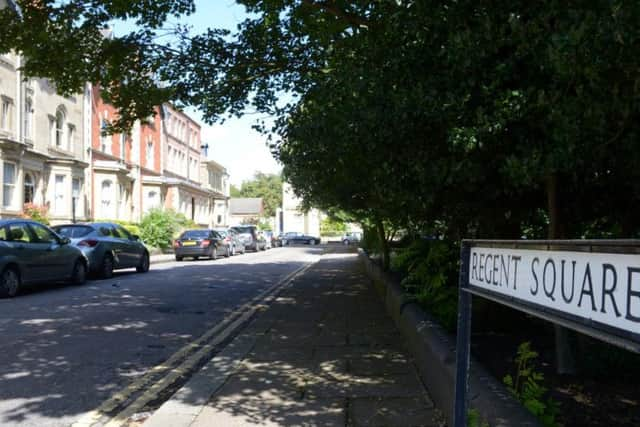

"Our building is not too large - The Bradford Club is about twice the size but with a similar number of members - so that has made things easier."
The committee have also scrapped the archaic application process of yesteryear, which required potential members to be proposed and seconded by an existing member before facing an interview panel which scrutinised their background and suitability.
Advertisement
Hide AdAdvertisement
Hide AdInterviews still take place, but anyone can apply and personality is the most important of the joining criteria.
"We don't have a capacity as such - it all depends how active our members are. Fees are £400 per year, but you get £60 of that back in vouchers, subsidised food and drink, and free snooker. There's also an under 25s category - our youngest member is 20.
"We offer half-price membership to spouses - we had one elderly widow who had come to the club as her husband's guest and didn't think she'd be welcome after he died. She was overwhelmed when we told her she could join in her own right.
"We are a lifeline for some of the older people - they get to interact with younger members and they have a lot to offer. We also have around 10 members from ethnic minority backgrounds, which will hopefully encourage more people to join - Harrogate is a very white town and we want to be more diverse."
Advertisement
Hide AdAdvertisement
Hide AdAmong the younger patrons is a recently-retired Premier League footballer of Afro-Caribbean heritage.
"We are close-knit here - there is nobody I wouldn't stop and chat to and there is usually someone you know in the bar. We will not accept anyone who would not get on with existing members or who would deter other people from joining - they would find themselves on the permanent waiting list! We have had to expel a few people over the years but fortunately that is rare.
"Our main criteria are that you've got to be a decent person who can carry on a good conversation. We sometimes do online background checks, but only to see if someone has been involved in criminal activity. It's a good vetting process."
Unlike more complacent wealthy clubs which were funded by historic legacies and land portfolios which eventually ran dry, The Harrogate's prudent financial management has enabled them to service past debts and invest in their facilities. A former porter's cubby-hole has been converted into a cosy ladies' bathroom, a sign of changing demographics.
Advertisement
Hide AdAdvertisement
Hide AdThey're keen to attract more TV and film productions - and indeed the clubhouse's beautifully-preserved Victorian interiors are ripe for period drama.
"We did appear on Who Do You Think You Are? when Emilia Fox featured in an episode (her great-great-grandfather, industrialist Samson Fox, was a past member, and actor Edward Fox belongs to the club today) and we'd like to do more filming. We've tried to keep things traditional and timeless here."
When Andrew considers the club's every-increasing popularity - it's now 'difficult to keep up' with the volume of new inquiries - he can still remember times when it struggled to find a role in the changing post-war social landscape.
"We actually did quite well during the war, as officers recuperating nearby were allowed to become temporary members. At one point there were 96 colonels.
Advertisement
Hide AdAdvertisement
Hide Ad"We never got down to 40 - which is the number at which the club can vote to disband - but we were at around 60 members for a while. The 1990s were very difficult - back then clubs found it hard to transition and were adhering to a strict idea from 100 years ago of what a club should be like.
"There is no religion, politics or business networking here. We're a group of interesting people who love and believe in Harrogate."
The Angel at Hetton's Michael Wignall delivers on his promise to bring another Michelin star to YorkshireThe Bradford Club
Stepping inside The Bradford Club is like entering a lost world.
Advertisement
Hide AdAdvertisement
Hide AdThis hidden haven at 1 Piece Hall Yard is the last of Bradford's five gentlemen's clubs. The bar, dining room, reading room and billiards tables were once the haunt of the wool barons whose wealth built the city. Formal dress in the restaurant is required, although pipe smoking is no longer permitted indoors. A traditional British menu is served.
It was founded in 1855, and its early patrons included magistrates, lawyers, bankers and the local MPs. Young solicitors beginning their careers were advised to join immediately for the networking opportunities on offer.
Sit Titus Salt and Ken Morrison are among the illustrious former subscribers.
The club today retains many of its traditions, but has had to move with the times. Relationships with the firms who would once pay for their staff to join cooled as women achieved senior positions in the workplace and found themselves excluded from the male sanctuary within. The Bradford Club has welcomed female members for 30 years.
Advertisement
Hide AdAdvertisement
Hide AdMany law and accountancy practices have relocated to Leeds, and the base of professionals working in the city centre has diminished. The wool industry, of course, is long gone, although the tradition of mill owners visiting the club for lunch continued for a while after the end of trading in the Wool Exchange in the 1970s.
The erosion of long, leisurely lunch breaks for even the most senior executives has further reduced the amount of time members are able to spend in this bastion of Victorian grandeur. Online business transactions have meant that face-to-face networking has become less necessary.
Of the 200 or so members, only around 20 are classed as 'town', meaning they live or work in the city centre. At its peak, there were 450 on the subscription list. Many of those living outside Bradford pay their fees out of loyalty and habit.
At one point, Bradford had the highest concentration of private clubs outside London, but those days are long gone. The rooms are hired out for functions to supplement the club's income, and more revenue is generated from TV filming - the interiors were used for the 2013 BBC drama The Great Train Robbery.
Advertisement
Hide AdAdvertisement
Hide AdClub president Tony Emmott has been a member for over 40 years.
“There’s no other place like it in Bradford, it really is unique. It’s a hidden gem in the city. One step forward from Piece Hall Yard you can go back a century and a half to Victorian Bradford because little has changed.”
The Doncaster Club
At one time, Doncaster had two clubs, both aligned to business and public service. Lawyers, accountants, senior police officers and newspaper editors were among the membership.
One, on Nether Hall Road, closed in the 1980s, but the building, now a private house, still has the engraved glass bearing its name.
Advertisement
Hide AdAdvertisement
Hide AdThe other, known simply as 'The Club', was housed in a Victorian townhouse on Regent Square for most of its history. Leicester House, which is now part of a hotel, was once the home of the chief engineer of the Great Northern Railway, which had its main works in Doncaster. The remaining members then relocated to another property on the same terrace for the final decade of the institution's existence.
Three floors were taken up by a billiards room, bar and living accommodation for the steward.
It lasted until 1999 before the committee finally disbanded after membership numbers dwindled to unsustainable levels. Furniture and fittings from the clubhouse were sold off at a public auction.
Retired journalist Russ Newton remembers being invited to lunch by a police chief inspector and a solicitor in the late 1980s, when they were desperately recruiting new blood.
Advertisement
Hide AdAdvertisement
Hide Ad"It was not well-known and they were clearly struggling to attract new members. They were mostly lawyers and accountants who went there for long lunches. Women were allowed, but were not encouraged to visit.
Yorkshire photographer's Countryfile-winning picture revealed to have been taken in a studio"We once reported on a woman who visited for a Chamber of Commerce meeting, and became trapped in a bathroom overnight - she had to shout for help from an upstairs window!
"I also got the impression it was a bit of a sanctuary for men to get away from their wives. Some of them who lived nearby would drop in after work."
The Leeds Club
The Leeds Club survived until relatively recently, closing in 2013. It had operated continuously as a private members' club since 1849. Between 2010 and 2017 (a new owner took over after 2013) it was run as an events and conference venue. It's now home to a bar and restaurant called The Lost and Found.
Advertisement
Hide AdAdvertisement
Hide AdThe 3 Albion Place establishment had 280 members when it cancelled subscriptions and stopped accepting new applications in 2013. It was struggling to generate enough income to survive from member usage alone.
It was built in 1820 and was originally a residence for the family of local surgeon William Hey before the club moved in. It has a listed men's lavatory that retains the original marble sinks and fittings.
Despite the city having a large base of professionals from which to draw members, there was always competition from other institutions. One of the club's neighbours on Albion Place was the Leeds Law Society, who rented premises on the street from 1876 until 1920. They then purchased 1 Albion Place, and the property remained their headquarters until 2015, when they leased it to restaurant chain Bill's and moved to a more modern building on Wellington Street.
The York Club
York's gentleman's club occupied a Regency townhouse on St Leonard's Place, opposite York Theatre Royal, until 1869, when they moved to a purpose-built clubhouse named River House on Museum Street, just before Lendal Bridge.
Advertisement
Hide AdAdvertisement
Hide AdIt had bedrooms for overnight stays as well as gaming rooms, a bar and dining room. There was even a private waterfront area.
Grade II-listed River House survives, although the club closed in the 1970s. It was then converted into office accommodation - Savills were one of the early tenants.
Today, most of the old clubrooms have been restored by Pizza Express, who have leased the unit since the early 2000s. The waterfront gardens are now Lendal Boatyard, a dock for pleasure boats that operate Ouse river cruises.